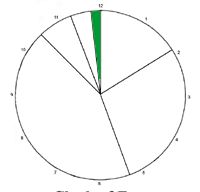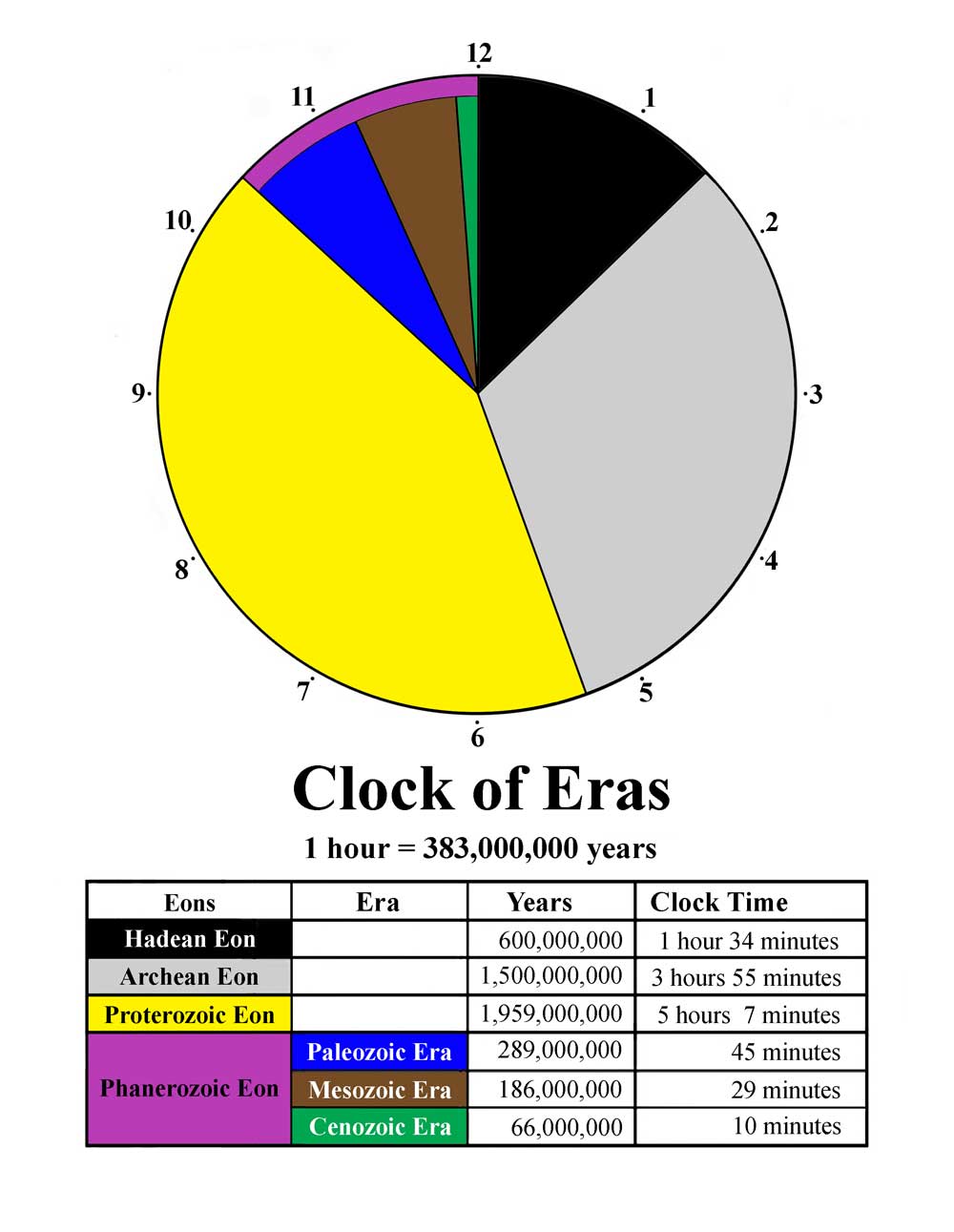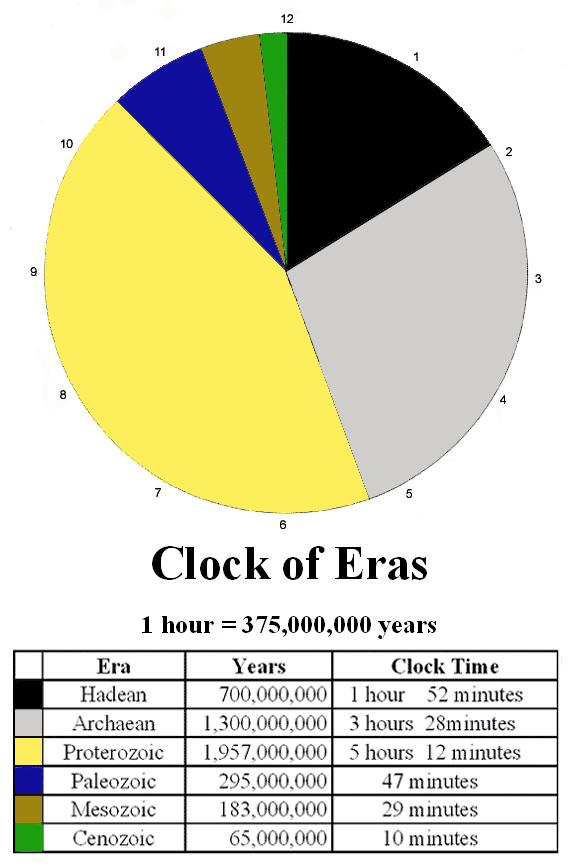Sign up for Lesson Plans, discounts & more!
The Clock Of Eras And Geologic Time

The Clock of Eras is a graphic aid to help us visualize geologic time. It is nearly impossible for the human mind to comprehend the amount of time that it has taken for the Earth to develop to its present state, yet we try to imagine each stage of its unfolding and the time that passed during each phase of development.
Just a note here: The original Clock of Eras was developed about 100 years ago. Our understanding of geologic time has come a long way. To get to the point the only true eras on the clock now are the Paleozoic, Mesozoic, and Cenozoic. The Hadean, Archean, and Proterozoic are now termed Eons.
The Clock of Eras uses the
analogy of a circular clock to represent the development of our planet
in geologic time. One can see at a glance the relative time lengths of
each major geologic era.
So how does this Clock work? The Clock represents geologic time on the
Earth since its birth to the present, from the initial events that
brought about the formation up to now. Each hour represents
approximately 383 million years on the first clock and 375 million years on the second.
We can’t take credit for the idea of this Clock. It is a concept that was developed in Montessori Education. The colors as used in the Montessori clock relate to the location of the life that was present during the time. So the Paleozoic Era is blue because life was primarily in the seas, the Mesozoic is brown because life moved to the land, and the Cenozoic is green because of the fresh new life: the mammals.
The Clock of Eras has been modified several times already and will continue to change over time as scientists learn more and more information through their research and discovery.
The first clock is our most up to date, and now includes the Phanerozoic Eon. The scale of this clock is slightly different from the second.
The lower clock is our previous version. It does not include the Phanerozoic Eon and some of the times listed for the Eons and Eras are just a bit out of date. The most significant change is the Hadean/Archean boundary. Scientists are finding new evidence of life farther back in time. The result is a shorter Hadean Eon and a longer Archean.
Click on the links below the clock for a description of each time period.


The first period of the clock of eras is the Hadean
A description of the Archean
A description of the Proterozoic Era
A description of the Paleozoic Era
A description of the Mesozoic Era
A description of the Cenozoic Era.
A clock of eras chart with Phanerozoic Eon. Click here for a printable version.
A blank or non-colored chart with Phanerozoic Eon. Click here for a printable version
A clock of eras chart.Click here for a printable version.
A blank or non-colored chart Click here for a printable version
Check out some of the Educational Materials for sale on our sister site fossilicious.com.

interested in more? If so, you may want to check out our other sites:
fossilicious.com - Our online fossil and mineral rock shop.
rocksandminerals4u.com - An educational site about rocks, minerals, and geology.
Geologic Time Geologic Time Line
Cenozoic Era
Quaternary
Neogene
Paleogene
Mesozoic Era
Cretaceous
Jurassic
Triassic
Paleozoic Era
Permian
Carboniferous
Devonian
Silurian
Ordovician
Cambrian
Archean Time
Hadean Time
Teachers Resources
Activities for Education and Fun
Earth Science Lesson Plans
Activities For Kids
Fossil Lesson Plans
Fossil Activities
Education Articles
Coloring Pages
Dinosaur Coloring Pages
Montessori Materials
Geology Club
Fossil Hunting
 |
 |
 |




